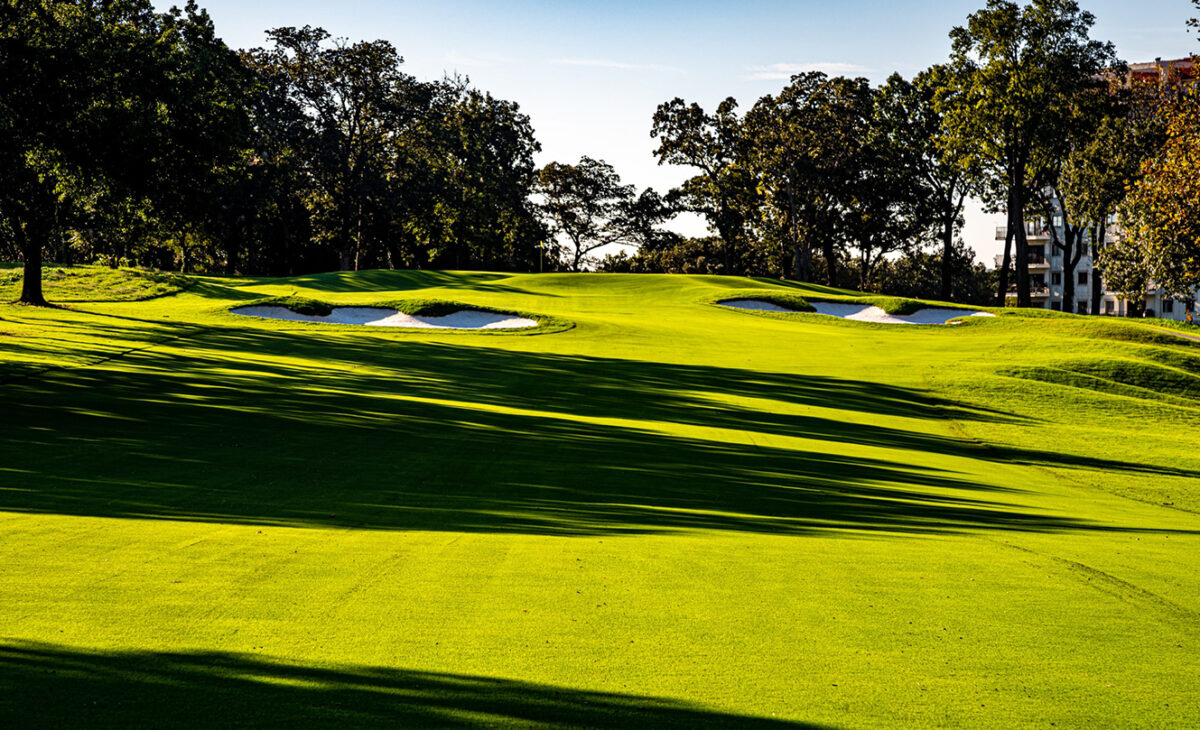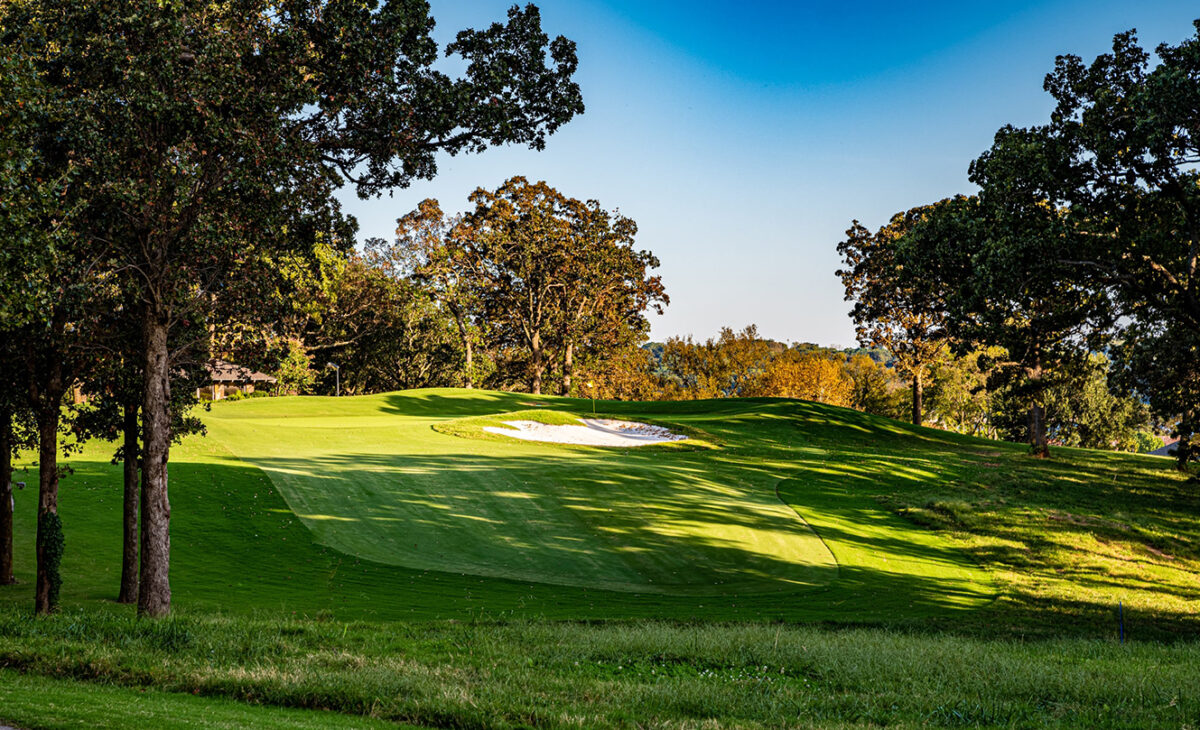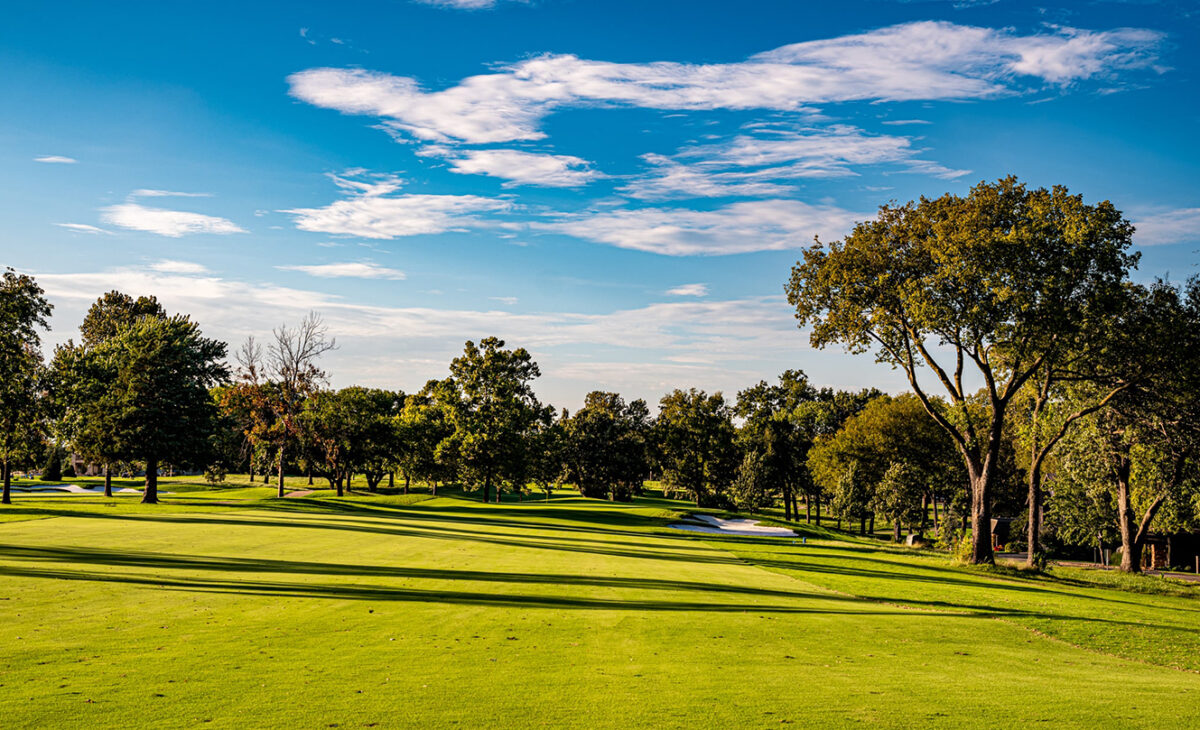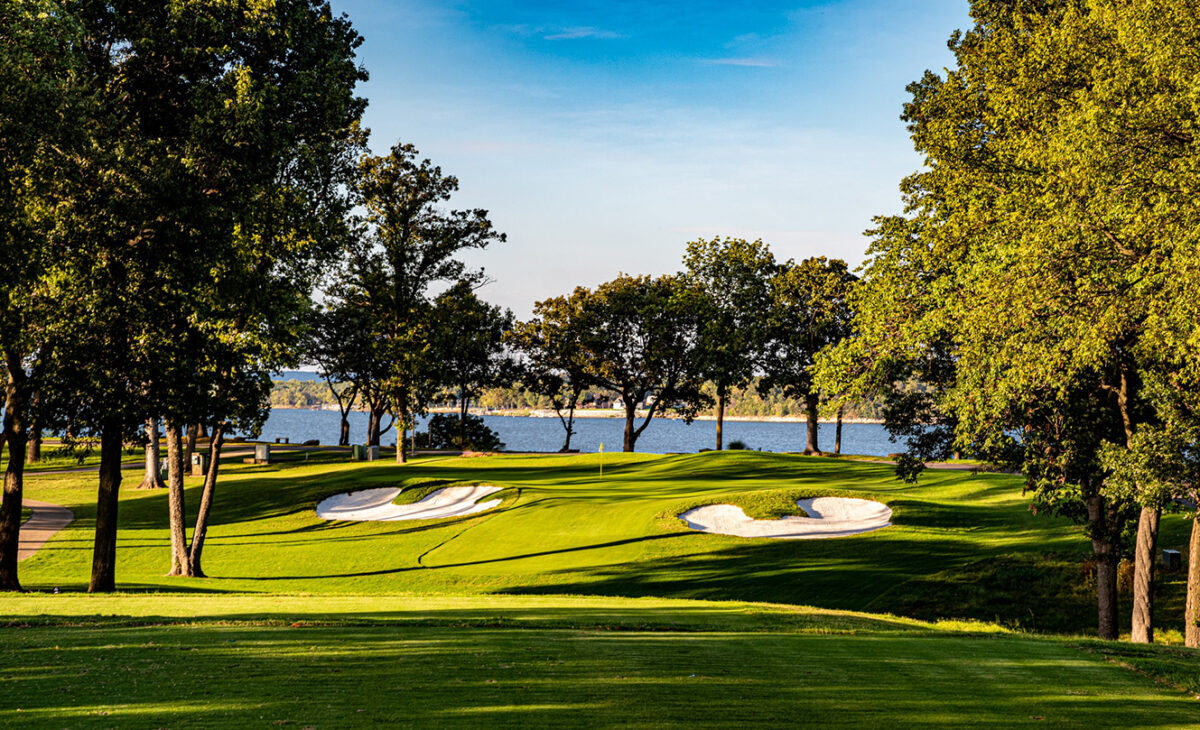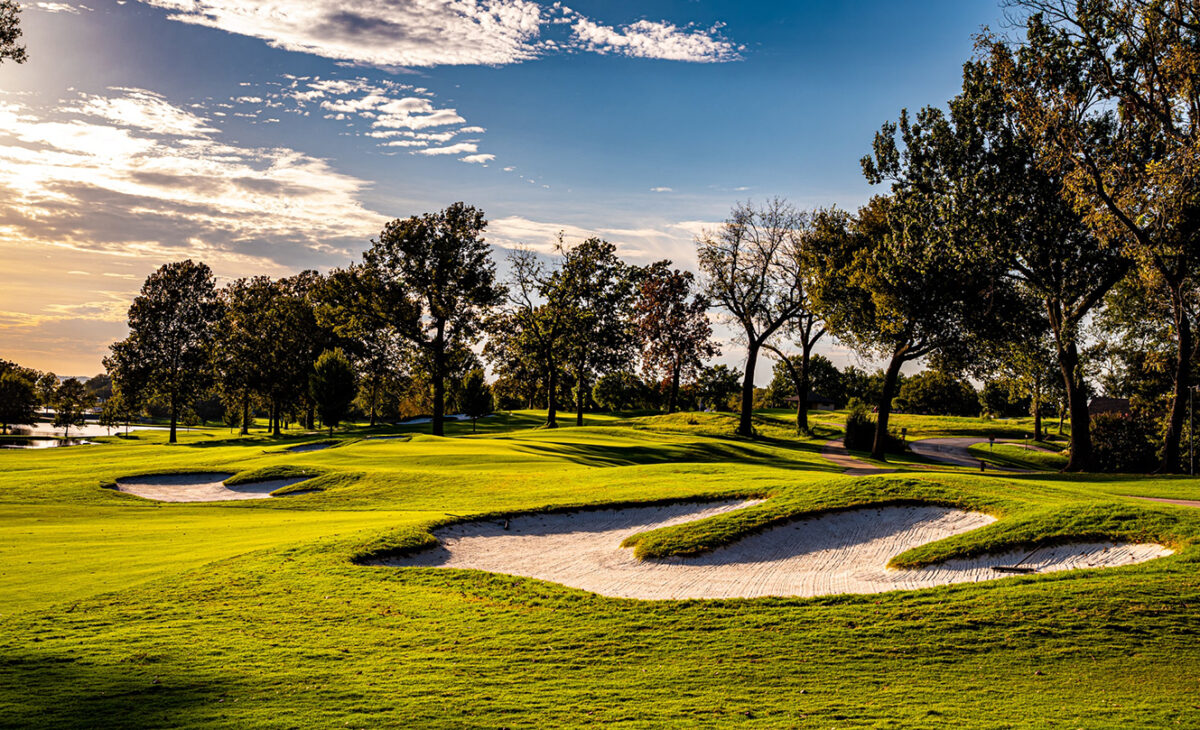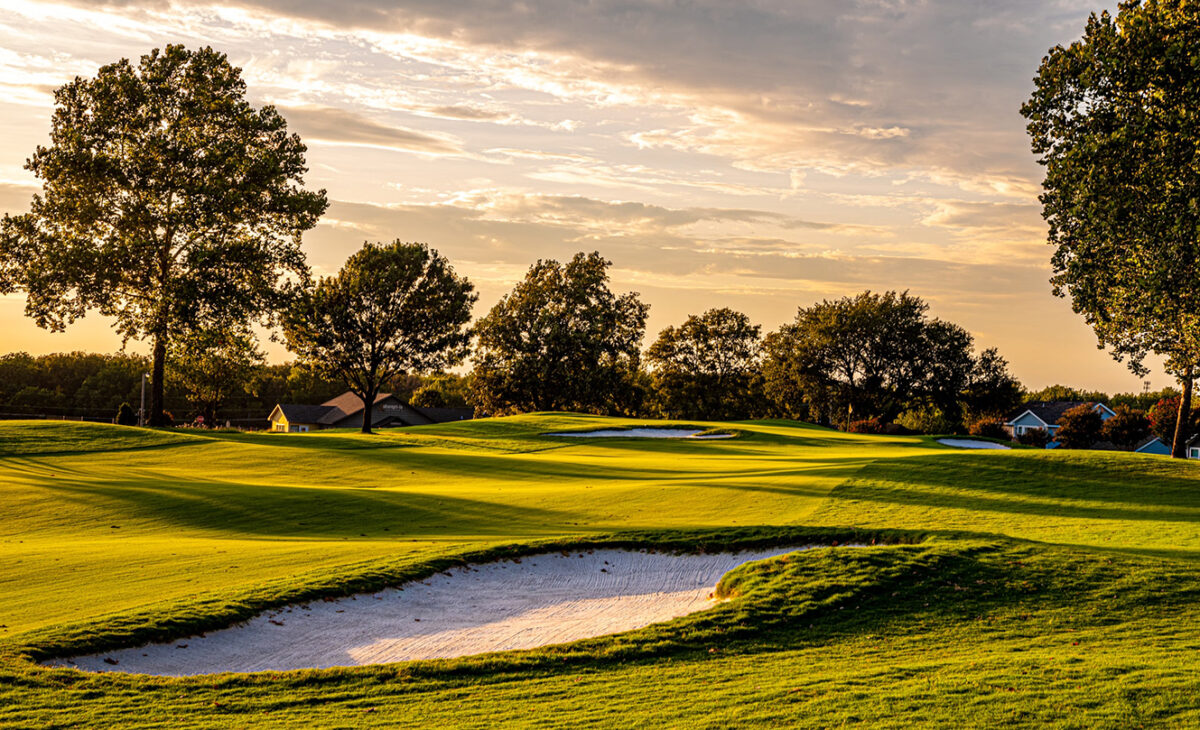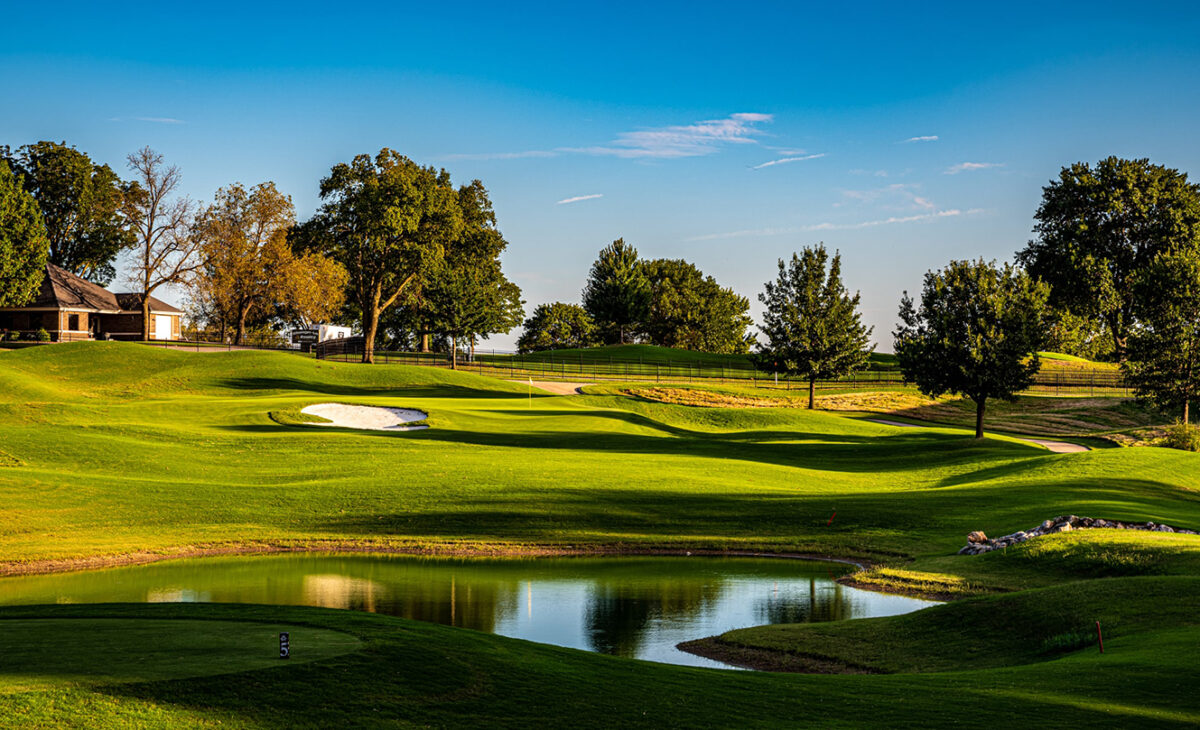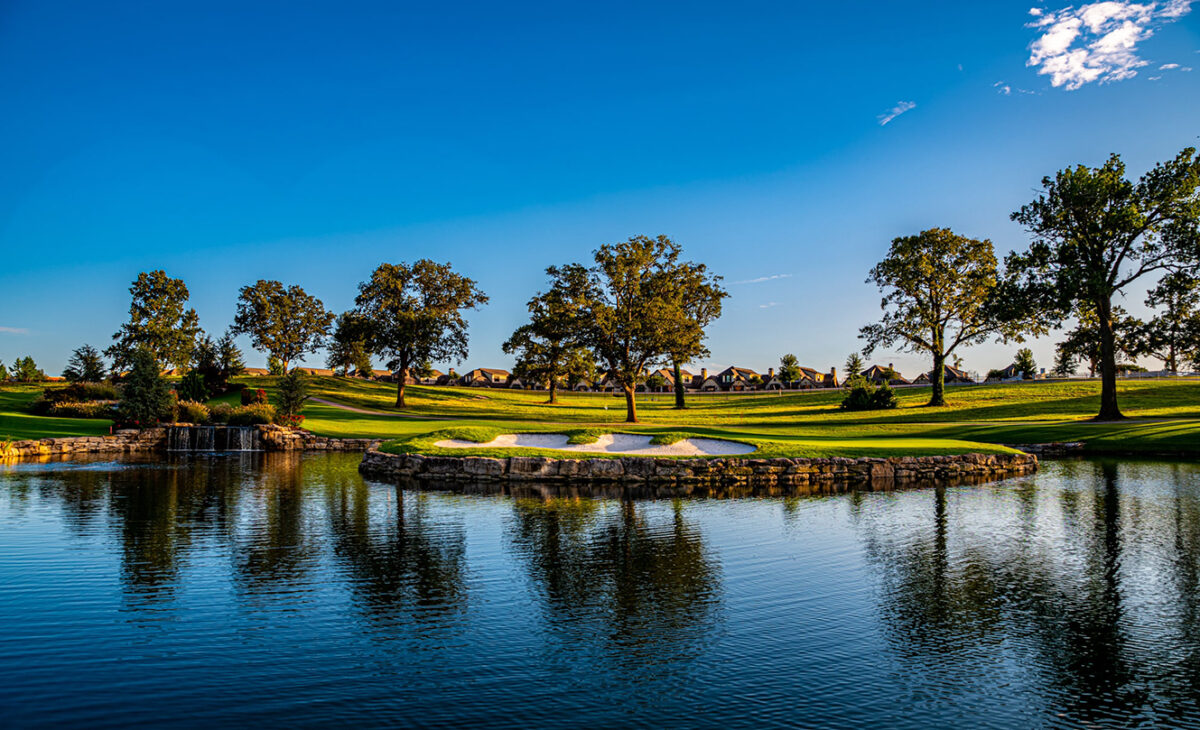Previously played as the back nine to the Old Blue Course, the much anticipated 2012 re-opening of the Legends Nine has been met with rave reviews. The changes to the Legends Nine have been varied and exciting. From the modifications to the greens complexes to the dual greens on the Mickey Mantle Hole, the north end of the Old Blue Course has been transformed into a modern classic. Superintendent, Justin May and his crew, along with United Golf, have spent countless hours and endless sweat providing an environment for premier conditions on what proves to be one of the best tests of golf in the four state region.
Although the original layout is still intact, the addition of fluid movement to the fairways, additional distinctive white sand bunkers, brilliant water features and diverse putting surfaces will present a modern contrast that has made Shangri-La the golf destination of the region. The layout of the Legends Nine provides the perfect complement to the magnificent lake views visible from all points on the golf course. With five sets of tees, the golf course will be set up daily to offer all levels of golfers the challenge that suits their game.
View our New Hole by Hole Flyovers:
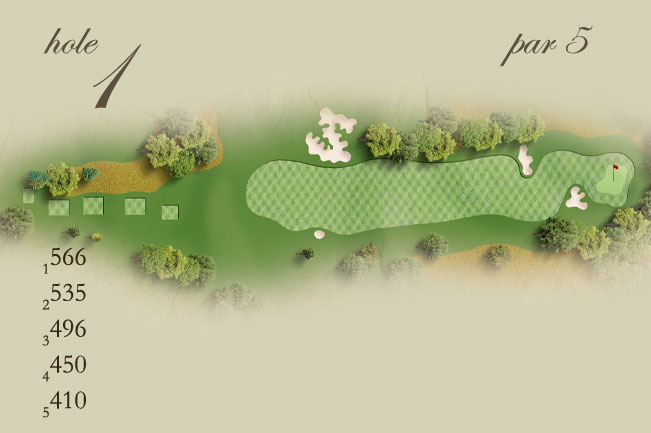
Number 1 is the first of three par fives on the Legends nine and demands both length and precision. Although a strong tee shot is not critical, at 566 yards and uphill all the way, three solid shots are required. As a three shot hole, leaving yourself a comfortable distance for your approach is important in order to navigate your ball close to the hole on the smallest green on the nine. Be sure to factor in the uphill slope or the false front will send your ball 20 to 30 feet down and away from the hole leaving a very difficult pitch. Be very cautious not to go long either. The back of the green slopes dramatically away and will leave a nearly impossible up and down.
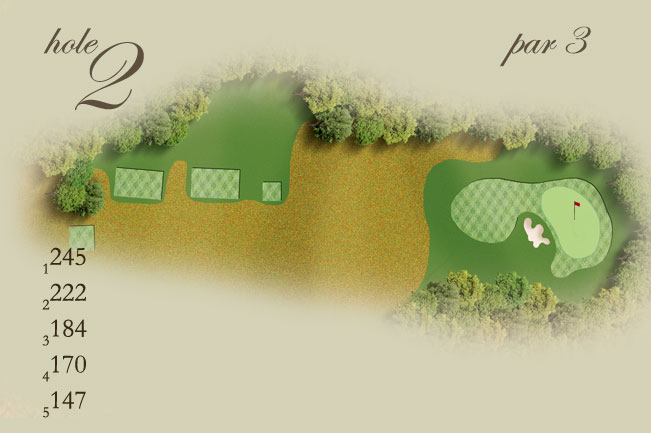
If you like long par three’s, you’ll love the second hole on the Legends nine. At 245 yards from the back tee, the intimidating tee shot must travel through a tight treeline to reach the greens complex. Make sure to take the wind seriously as you don’t feel it as much from the teeing ground, but will definitely notice it once your ball is launched up the hill towards the green. The greens complex is the classic “punchbowl.” green where the putting surface resides three to six feet below shortly mown mounds surrounding the green. At 4500 square feet, the green actually plays more like 7000 square feet because your ball will always come off the sides and end up on the putting surface. So do not leave your ball short of the green, always club up and plan on using the side and backboards to help you finish closer to the hole. On #2, coming away with par is a great accomplishment.
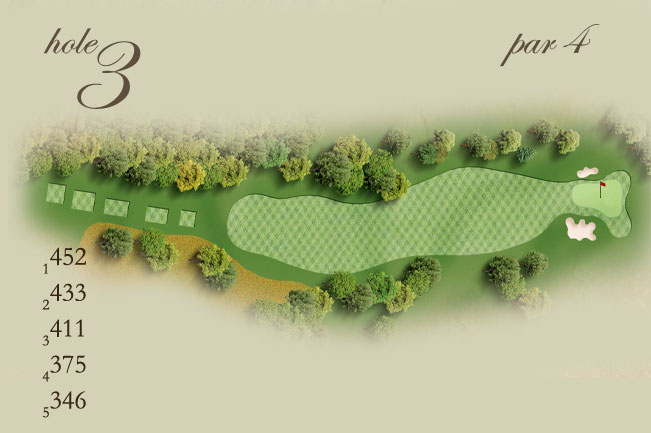
An accurate drive is the key to success on #3 Legends as trees pinch inward creating a chute off the tee. The narrow landing area demands a drive that stays down the left side. A ball driven to the right may find some gnarly native grass. The front of the putting surface slopes towards the approach, but be careful when the hole location is towards the back of the green as the surface slopes away from the middle.
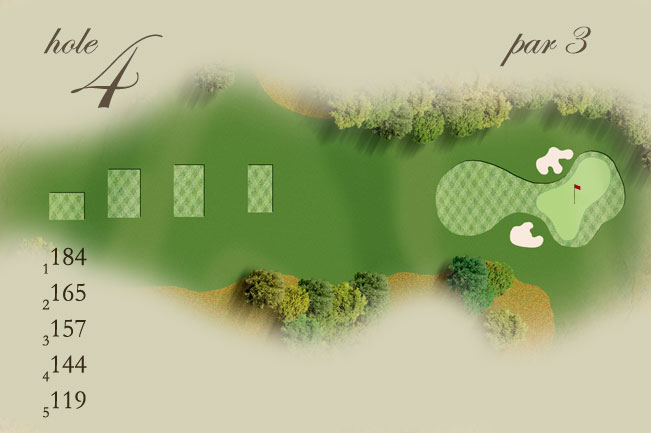
The fact that number 4 is the shortest of the three par three’s on the Legends Nine shouldn’t cause you to take this hole lightly. Avoiding the bunkers that protect the front of the green and landing safely on the putting surface is a good start. But, this is where the fun begins. Don’t let the minimal green square footage fool you into thinking you will have an easy two-putt. Misreading the speed or slope on number 4 will cause a knee-knocker of a comeback putt. The key to success is navigating your approach to the correct section of the green and side of the hole. Hitting the ball over the green is a recipe for disaster.
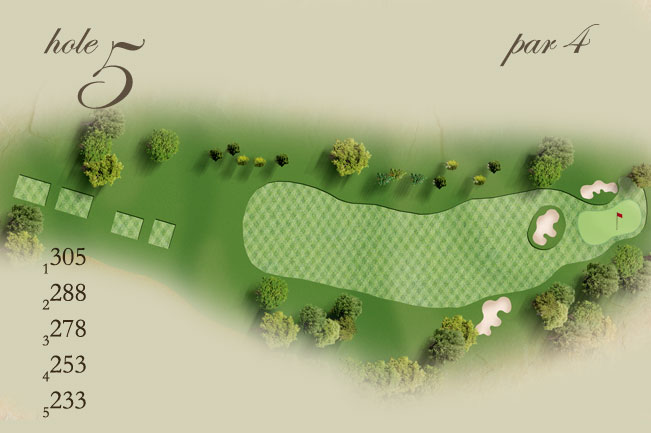
The shortest par 4 at Shangri-La, number 5 demands choosing a driving club that leaves your most comfortable approach distance into the very narrow and undulating green complex. Driving your tee shot into the center fairway bunker is a mistake that will leave you with the hardest shot in golf (the 50 yard bunker shot) and can cost you precious strokes on a hole without much length. Avoid the left side off the tee or risk having to navigate the large tree that protects the left side of the green. Your approach shot needs to be perfect if you want to have your ball come to rest close enough to convert your birdie chance. An eight-foot put on number 5 may be the trickiest putt of that length you will see at Shangri-La.
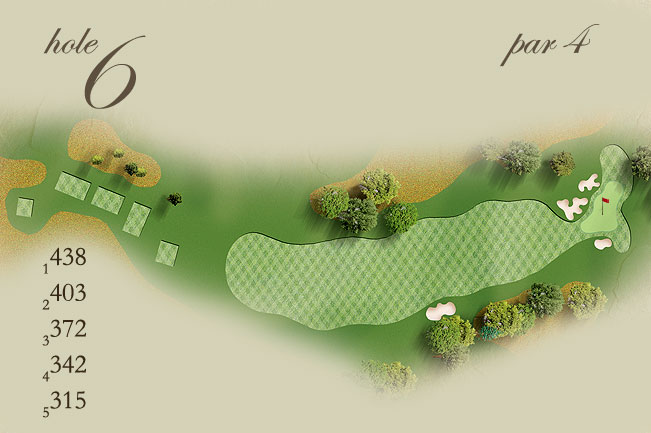
Although the total length can creep up on you, an accurate approach shot is the key to lowering your score on number 6. A high ball flight is preferred off the tee to carry the small ridge halfway to the uphill landing area and land on top of the flats. A long drive will provide a better opportunity to carry the menacing front bunker with a higher lofted club in order to stop the ball more quickly. The green sits high above the rest of the complex. And with severe sloping collection areas, missing this green left, right or long can really put a dent in your score. The putting surface is another shining example of the Shangri-La green redesigns. With high and low accent points scattered throughout the complex, holing any length put is never a given.
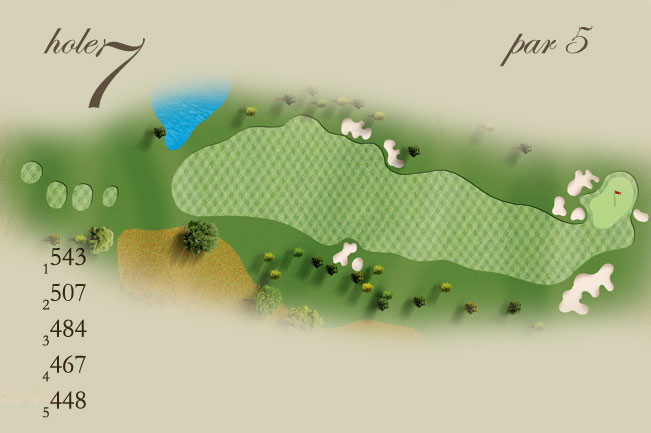
The shortest of the three par fives on the Legends Nine, number 7 sets up perfectly for good scoring. But play smart, the well-bunkered fairway and greens complex can gobble your ball up and leave a blemish on your scorecard. Avoiding the bunkers lining both sides of the fairway is a must off the tee. This will leave you a decision to make whether to go for the green in two or layup to your comfortable distance for a much easier approach. The large sloping green is receptive to shots, but flight your ball as high as possible to make sure it doesn’t release through the back of the green. The safest play is to lay your ball in large opening on the right side of the green leaving a straightforward pitch and a short putt for birdie. Be careful when approaching the green not to miss left. The green slopes severely away from the middle and will leave you a very difficult up and down.
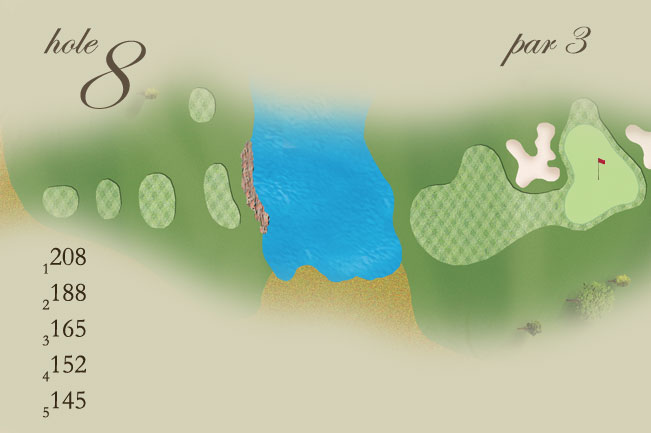
Probably the toughest par three at Shangri-La, #8 has length, wind conditions, difficult bunkers and a complex green to manage. Carrying the pond shouldn’t pose much of a problem, but landing your ball on the correct side of the hole is at a premium in order to avoid a very difficult putt. Although the front greenside bunker looks like trouble, it is marginally better than the shot presented from the back bunker. Leaving your ball long will provide one of the most challenging bunker shots on the course. With a downhill sloping face and a green that pitches away, getting down in three should be considered a success.
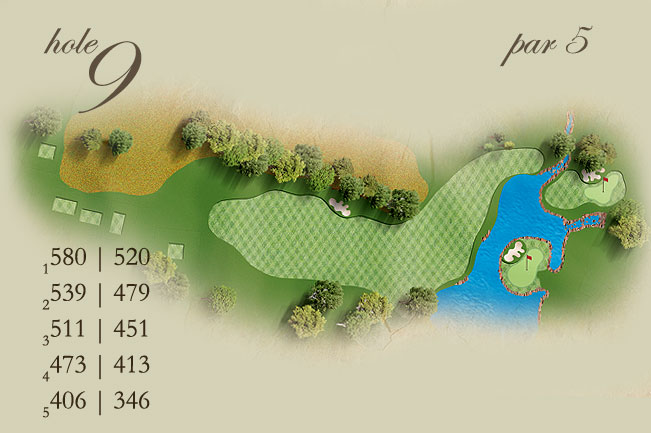
“The Mickey Mantle Hole” – As the signature hole at Shangri-La, the downhill par five number 9 will more than likely be the finishing hole of your round. And you will definitely have some serious decisions to make in order to finish strong. With two greens complexes separated by a dramatic and spectacular waterfall feature, the first decision is whether to play to the treacherous island green or to the second greens complex that adds an additional 70 yards to the hole. The local rule is for the person holding the honor to select which green to play. No matter which green is chosen, your tee shot will require some serious thought. If you are a risk taker, and like to impress and intimidate your playing partners, you will want to grip it and rip it down the left side of the fairway. Be sure to avoid the fairway bunker or you will be forced to lay up to the large pond surrounding the island green and protecting the upper green approach. If you like to play the odds and don’t plan on going for either green in two shots, then just finding the fairway is the perfect drive. This will leave you the opportunity to choose how close you want to leave your ball to the pond in order to allow the perfect approach distance. When playing the upper green, which is protected by the waterfall feature on the right and a large bunker on the left, lay up as close to the water as possible. This will leave a higher lofted club to approach the uphill green. When approaching the island green, make sure to check the wind conditions and judge the elevation change correctly, or you will end up wet. Both greens present similar challenges as accent points will affect every putt. Good Luck!
The tee shot on #4 is probably the most demanding on the entire nine. The large bunker on the left, combined with a narrow fairway cut, will force many balls to find the trees on the right. Uphill all the way, this par four requires two strong shots to arrive on the putting surface. Study your putt well or the subtle breaks in the large greens complex will result in a missed opportunity and leave you shaking your head on the way back to your cart.
